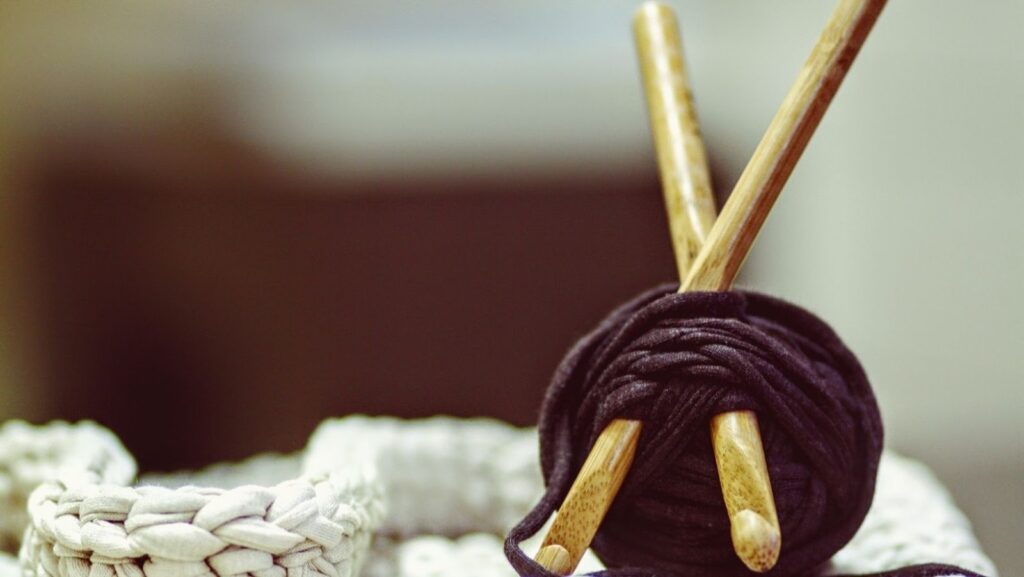Ever found yourself tangled in a web of knitting needles and crochet hooks, wondering if they’re interchangeable? You’re not alone. As an experienced crafter, I’ve often pondered the question: can you crochet with knitting needles?
Can You Crochet With Knitting Needles
Crocheting with a knitting needle typically results in inconsistent stitches. This is because the lack of a proper hook often causes the yarn to slide off the needles, which can be quite frustrating. Besides, it can yield an inferior final product, as the tension will not be uniform throughout your piece. For instance, consider creating a crochet square blanket – the intertwines may become uneven and the aesthetic might be substandard if you use knitting needles instead of crochet hooks.
We strongly advise against attempting advanced crocheting techniques such as Tunisian crochet or complex lacework patterns with knitting needles. The absence of hook limits the needle’s ability to pull through multiple loops at once, restricting the scope of stitches you can do. Moreover, intricate patterning primarily requires the precision that only a crochet hook offers.
Despite these points, persistent individuals may still choose to experiment and create unique textures. Crocheting with knitting needles indeed requires an exploration mindset, and the results are seldom textbook-correct. However, for purists, it’s always best to stick to using crochet hooks for crocheting and knitting needles for knitting.
Understanding the Tools: Crochet Hooks vs Knitting Needles
Understandably, the question arises from a place of curiosity or ambiguity; can one tool substitute the other? Before exploring the answer, it’s imperative to recognize the distinction between crochet hooks and knitting needles.
Knitting needles, typically existing in pairs, are long with points at either end. Some of these are double-pointed, leading to complex creations like gloves and socks. Circular knitting needles, with notable exceptions, aid in crafting larger pieces like blankets and sweaters. Meanwhile, there are numerous kinds.
In contrast, crochet hooks paint a different picture. These are single tools, featuring a hook at one end. This hook is the primary means of creating various stitches in crochet projects. A closer look at these hooks unveils different types. Inline hooks, often called Susan Bates-style, boast a cylindrical shape. Tapered hooks, also known as Boye-style, showcase a more conically tapered shape near the hook.
Consequently, the rule of thumb remains: Use crochet hooks for crocheting, knitting needles for knitting. Blurring the lines between the two only leads to subpar craftsmanship. Maintaining clarity and using the specified tool eases the crafting journey, leading to eye-pleasing, skilled creations.
Knitting Fundamentals
Embarking on your knitting journey necessitates a thorough understanding of the basics, commonly known as knitting fundamentals. Unlike the previously discussed crochet, knitting employs a specific method of loop transfer.
- Stitches: Establish the backbone of knitting. The most fundamental stitches include knit and purl.
- Needles: Designed distinctly to hold active stitches, possess pointed tips aiding in manipulating the yarn. Unlike crochet hooks, these don’t have a hook on the end.
- Yarn: Functions as the medium woven into a cloth through knitting. Popular fibers include cotton, wool, and synthetic varieties like acrylic.
In knitting, I engage two needles together, transferring loops of yarn from one needle to the other, differentiating it from crochet where I use a single hook. Appreciating the disparities between crochet and knitting illustrates the difficulty, if not impracticality, of interchanging tools between these crafts.
Using a Knook for Crochet-Like Textures
So, can you crochet with knitting needles? Technically, yes. But it’s not the best idea if you’re aiming for precision and variety in your stitches. It’s a bit like trying to eat soup with a fork – possible, but not exactly efficient or enjoyable. At the end of the day, it’s all about using the right tools for the job. Stick with crochet hooks for crocheting and knitting needles for knitting to maintain stitch consistency and tension. That’s the surefire way to achieve the best results in your craft projects.

